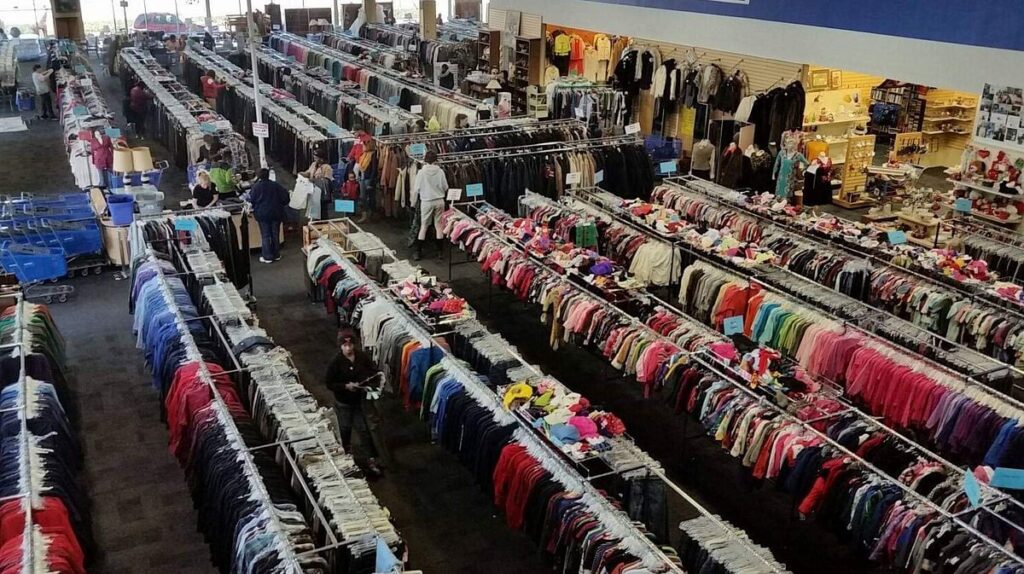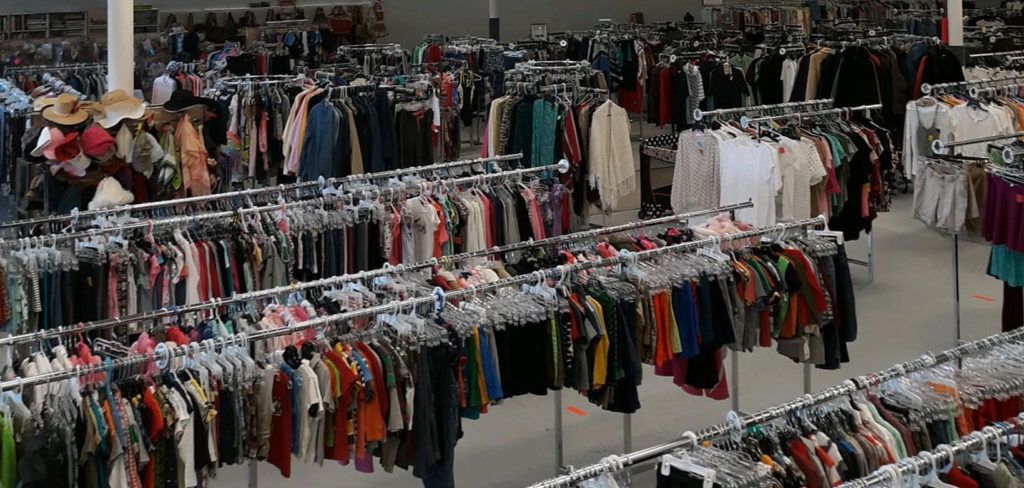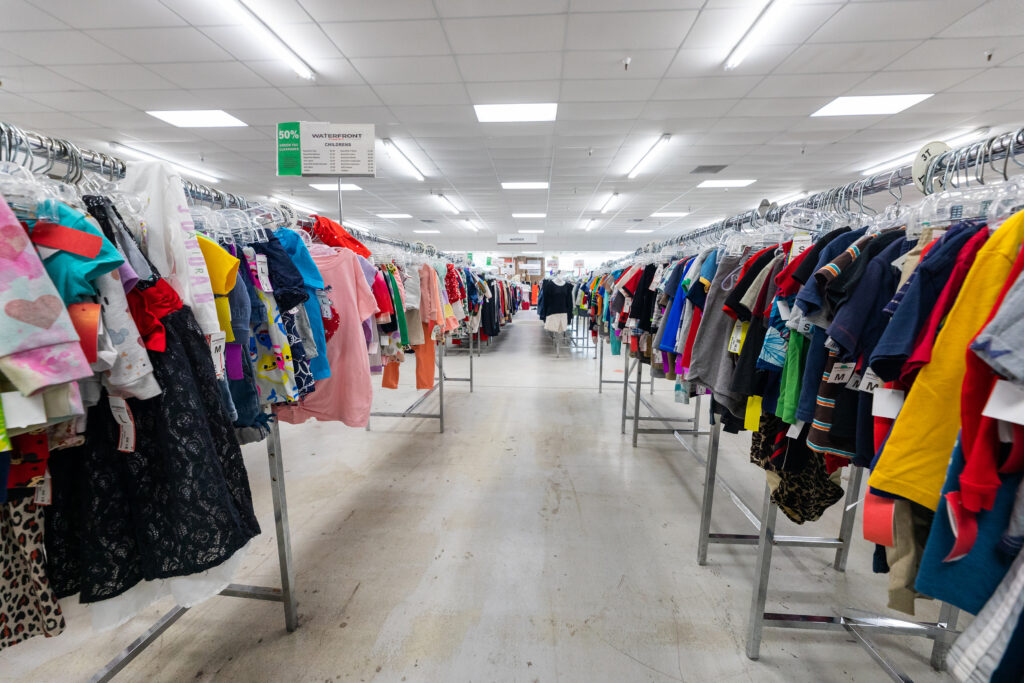A thrift store is a retail shop that sells second-hand clothing, furniture, household goods, books, and other items. These goods are usually donated by people or obtained from other second-hand sources.

Thrift stores offer products at a lower price than new goods, making it an affordable option for consumers. These stores are often operated by nonprofit organizations, community groups, or small businesses and can contribute to sustainability by promoting the reuse and recycling of items.
Table of Contents
1. Choosing the Right Location to Open a Thrift Store:
Choosing the right location to open a thrift store is extremely important, as it directly affects the visibility, accessibility, and success of your store. Ideally, your store should be located in a location that is fairly crowded, such as a busy shopping area, popular neighborhood, or near a college campus where students are looking for affordable items.
It is also important to pay attention to the demographics of the area; you should make sure that there is a demand for second-hand items among local residents. Accessibility is also important—your store should be easily accessible by foot, car, or public transportation, and have parking if possible. Additionally, analyze the competition in the area.

While being close to other thrift stores can attract a steady customer flow, being too close can also divide the potential market. Find a location where the rent is reasonable and visibility is good, which can maximize foot traffic and attract more customers. Overall, choosing the right location helps establish your thrift store as a convenient and attractive option, providing a strong foundation for your business’s success.
2. Materials and Resources Needed to Start a Thrift Store
To start a thrift store, you need various materials and resources that help the business run smoothly and be successful. First, a suitable location is needed, which can range from renting a commercial space to setting it up in a high-traffic area, or even on an online platform. Next, you need shelving and display fittings, such as racks, hangers, tables, and bins, to organize and display the goods.
You will also need storage solutions, such as bins, boxes, and clothing storage, to manage the goods. The right signage is essential to attract customers and guide them within the store, including price tags and promotional displays. To manage transactions, a point-of-sale (POS) system will be needed, including a cash register, card reader, and possibly a computer for inventory management.

In addition, cleaning supplies will be needed to maintain the store’s hygiene and overall appearance, such as vacuums, mops, and cleaning agents. Marketing materials, such as business cards, flyers and social media accounts, are important for promoting the store and connecting with the community. Finally, consider legal and administrative tools, including business licenses, insurance and accounting software to help you manage finances and comply with regulations.
3. The Power of Social Media and Local Advertising
Effective advertising is very important for starting a thrift store business. Social media platforms can prove to be a powerful tool for this purpose. Share the unique and stylish items available in your store through engaging posts.
Use targeted advertising and hashtags to increase your reach and attract local shoppers. Also, use local advertising methods such as flyers, community boards, and collaborations with nearby businesses to spread awareness among your local public.

Organizing local events or sales can also help bring customers to your store and build a loyal customer base. The combination of these strategies will be helpful in establishing your thrift store’s presence and attracting a steady customer stream.
4. Details of the starting capital required to open a thrift store
Starting a thrift store typically requires an investment of ₹50,000 to ₹60,000, which is divided into several key areas. The main use of this initial capital is to obtain a suitable location, which may include a rental deposit and first month’s rent.
Additionally, budgeting must be made for store setup, including shelving, display racks, and furniture, to create an inviting shopping environment. Inventory procurement is another significant expense; obtaining quality second-hand goods from donations or wholesale suppliers can be cost-efficient but must be managed carefully.

Other expenses include branding and marketing efforts to attract customers, as well as the cost of obtaining any necessary business licenses and permits. This investment also covers operational expenses such as utilities, insurance, and initial staffing (if needed). Overall, while the initial investment can be considerable, it is necessary to set up a well-functioning and attractive thrift store that can attract customers and operate efficiently.
5. How to start a thrift store: How to earn ₹30,000 per month
Starting a thrift store can be a lucrative business that not only benefits you financially but also promotes sustainability in your community by providing affordable and unique goods. If you want to earn ₹30,000 per month, you’ll need to carefully plan and manage several aspects of your business.
First, consider the location of your thrift store. Choosing a high-traffic area that offers good visibility can significantly increase your customer traffic. It’s important to secure a location at a reasonable rent so you can maintain your profitability. Your initial investment will include rent, store fixtures, and inventory, which you can obtain from donations, estate sales, or wholesale second-hand suppliers.

The next step is to properly compile your inventory. Offer a variety of clothing, accessories, and household items in your store so you can attract a wide customer base. Quality control is important so you can ensure the items you sell are in good condition, which will maintain your store’s reputation and customer trust.
Pricing strategy plays a key role in achieving your revenue goals. Price items competitively while ensuring you can cover your expenses and make a profit. Implementing promotions or discounts can boost sales and attract more customers.
Effective marketing is essential to your store’s success. Use social media, local advertising, and community events to raise awareness and drive traffic to your store. Connect and build relationships with your local community
Conclusion
Thrift stores play an important role in both the economy and the environment. They make used goods available at affordable prices, providing consumers with budget-friendly options and promoting sustainability through the reuse and recycling of items. Often, these stores are operated by non-profit organizations or community groups that provide funding for charitable activities and services in local communities. Adopting the thrift store model not only helps individuals save money but also promotes a culture of conscious consumption and environmental responsibility.
If u want to Watch the Video You can visit to our You tube Businovations Channel and watch the video……
Click the link to read the Recent Posts….
Start Organic Baby Food Business with Low Investment: Simple Tips and Strategies (174)


3 thoughts on “Easy and Low Investment Steps to Start a Thrift Store Business (181)”